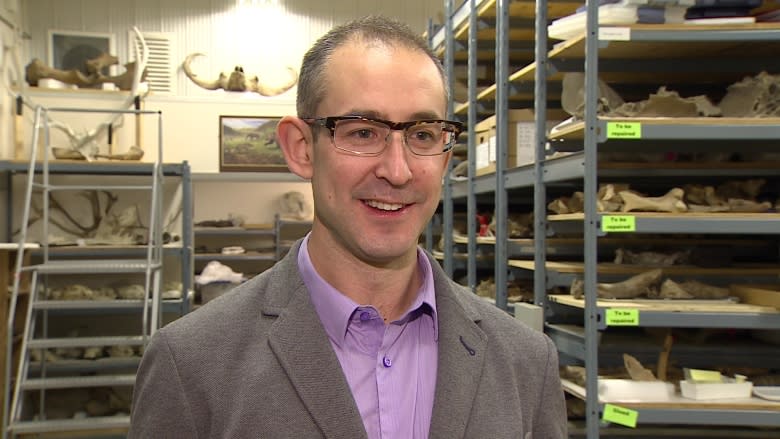How one Yukon fossil helped solve an ancient mystery

The question had plagued ice age researchers for a long time, says Yukon government paleontologist Grant Zazula— when did bison arrive in North America?
The answer was found, in large part, thanks to a single fossil found a decade ago, buried in a riverbank near Old Crow, Yukon.
"It's amazing that when you find a single fossil — especially in a remote place like the Porcupine River of Old Crow — that can solve a major mystery that many, many generations of paleontologists have been wondering about for a long time," Zazula said.
The fossil was dug out of a layer of volcanic ash in Ch'ijee's Bluff, in 2006. It wasn't immediately thought to be of major significance, Zazula said. Bison fossils are relatively common in Yukon and Alaska.
But when the researchers dated the fossil — to about 130,000 years old — "we thought we had the answer," to that vexing question of when bison arrived, Zazula said.
The fossil, along with another one nearly as old found later in Colorado, served as the raw material for a team of international scientists to extract DNA and determine whether there was a common ancestor. There was.
Researchers then used that information to determine when the first bison likely crossed the land bridge from Asia into North America — about 130,000 years ago, roughly the same age as the Yukon fossil.
Further questions
Once the bison arrived in North America, "they basically just take over the joint," Zazula said.
"They change the landscape, they eat tons of vegetation, they form huge herds and they really alter the ecosystem."
They also may have helped drive Yukon's wooly mammoths and ice age horses into extinction, he says.
"The great thing about a discovery like this is, it just leads to further questions."
Zazula says since the research was published, he's heard from other scientists who want to study Yukon's ancient soils and vegetation to learn more about how bison changed the ecosystem.
"Again, it puts Yukon on the map," he said.
"People are going to learn about these fossils that come from the Yukon, and especially the Old Crow region. The Vuntut Gwitchin [First Nation] have always been incredibly supportive of ice age paleontology, and it's nice to be able to tell that story to the world."

